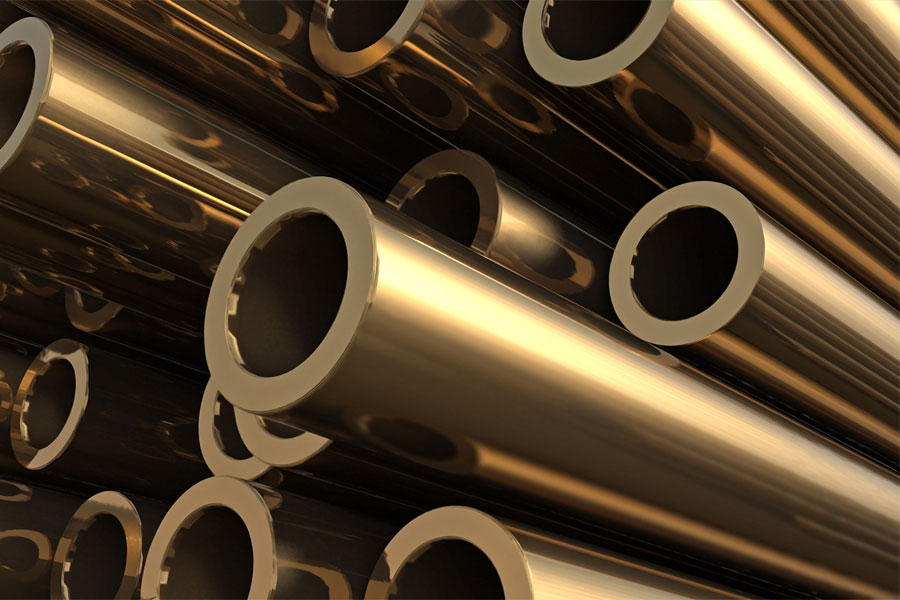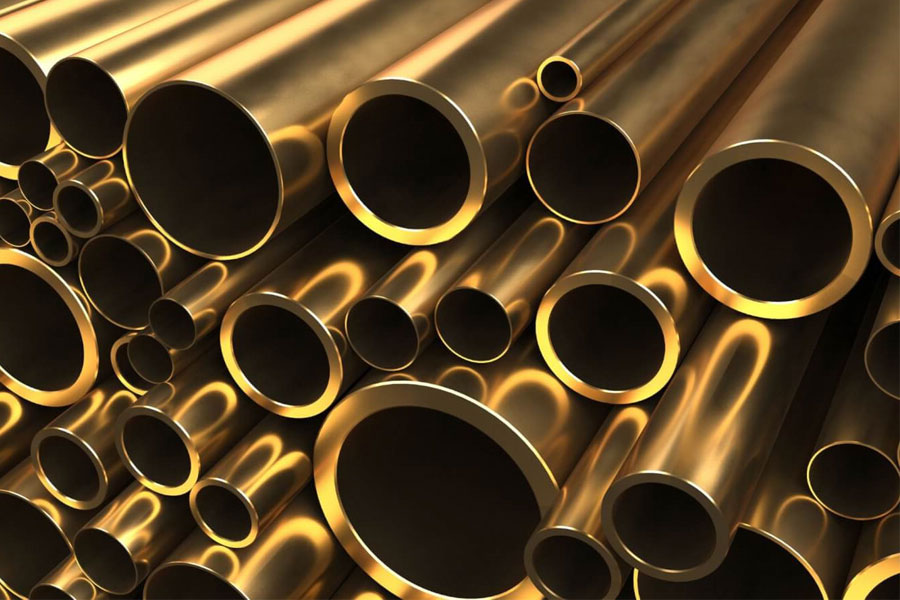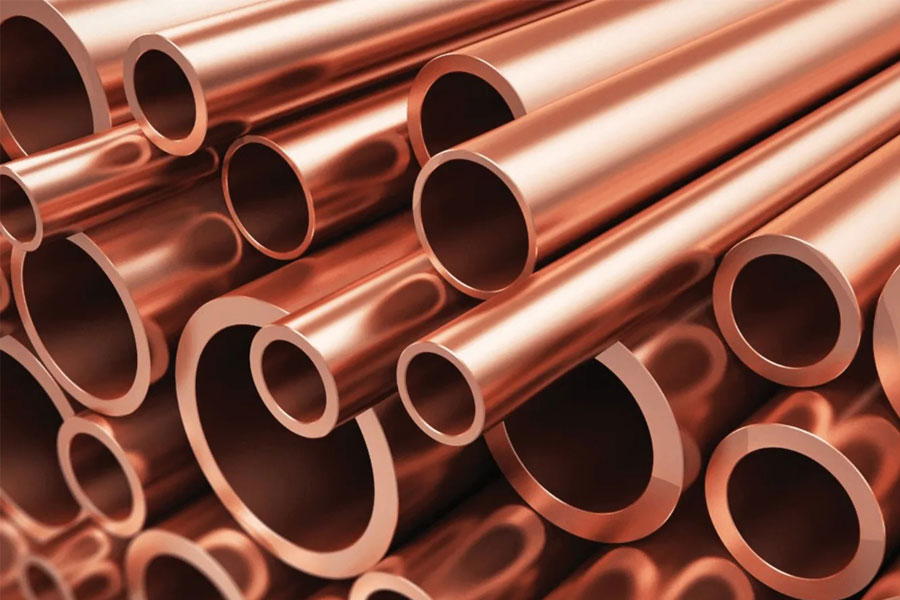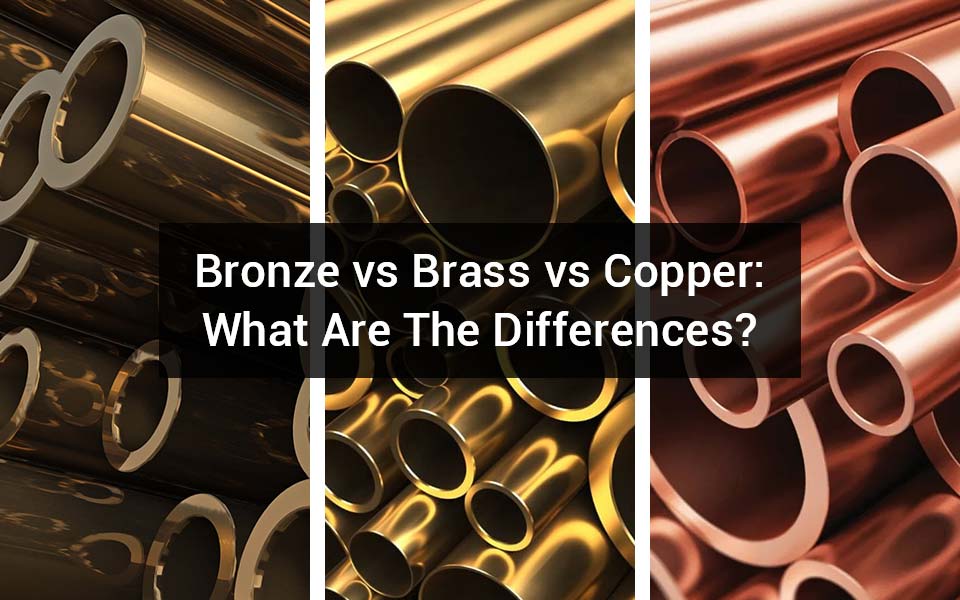When it comes to machining, understanding the differences between materials is essential for selecting the best one for your project. Bronze, brass, and copper are three popular copper alloys, each offering unique advantages depending on their properties and applications.
In this article, we will delve into these three materials by looking at their overview, grades, properties, and applications, and will provide a comparison chart to help you make an informed decision.
1. Bronze

Bronze is an alloy primarily made of copper, with tin as the main secondary element. Over the years, various other metals such as aluminum, phosphorus, and silicon have been added to improve its properties, making it one of the most versatile alloys. Historically, bronze has been used since ancient times in the creation of tools, coins, and artwork.
Grades
Some common bronze grades include:
- C90700 – A lead-free tin bronze.
- C93200 – Known for its high wear resistance, this grade is often used in bearing applications.
- C52100 – High-carbon bronze used in springs and electrical contacts.
Properties
- Strength & Durability: Bronze is highly regarded for its durability, exceptional toughness, and ability to resist wear, corrosion, and harsh conditions effectively.
- Corrosion Resistance: It offers exceptional corrosion resistance, particularly in saltwater environments.
- Malleability: While harder than brass, bronze is still malleable enough to be shaped or machined.
- Electroconductivity: While not as conductive as copper, bronze still provides a decent level of electrical conductivity.
Applications
- Marine & Naval: Used in ship propellers, pumps, and other underwater components due to its high corrosion resistance.
- Industrial Machinery: Bearings, gears, and bushings made from bronze can handle heavy loads with minimal wear.
- Art & Sculptures: Bronze has been a favorite material for artists due to its aesthetic and physical properties.
2. Brass

Brass is an alloy of copper and zinc, typically in varying proportions. Its versatility, ease of machining, and attractive yellow-gold color have made it a popular material in both decorative and industrial applications. Brass can be classified into several types, with the most common being red brass, yellow brass, and naval brass.
Grades
Some common brass grades include:
- C36000 – The most commonly used brass, ideal for machining with excellent machinability and moderate strength.
- C28000 – Known as leaded brass, this is often used for precision machining in high-volume production.
- C46400 – A high-strength brass used in marine applications and has better corrosion resistance than other brass alloys.
Properties
- Machinability: Brass is highly machinable, making it a go-to metal for producing intricate parts.
- Corrosion Resistance: Though not as corrosion-resistant as bronze, brass still performs well, especially in less harsh environments.
- Aesthetic Appeal: Brass has a bright, gold-like appearance, making it a popular option for decorative uses.
- Ductility: Brass is relatively ductile, allowing it to be molded into complex shapes without breaking.
Applications
- Plumbing: Brass is commonly found in faucets, pipes, and fittings because of its resistance to corrosion and ease of machining.
- Electrical: Brass is used in connectors, terminals, and electrical switches.
- Jewelry & Decoration: Its appealing color makes it popular in jewelry, coins, and decorative items.
3. Copper

Copper is one of the oldest metals known to humankind, and it remains a key material in many industries today. While copper is a naturally pure metal, it is frequently alloyed with other materials to enhance specific characteristics. It is well-known for its excellent conductivity and malleability.
Grades
Some common copper grades include:
- C11000 – Electrolytic tough pitch copper, primarily used in electrical applications.
- C14500 – Oxygen-free copper, ideal for applications requiring the highest electrical conductivity.
- C19210 – Phosphorus deoxidized copper, often used for components exposed to high temperatures.
Properties
- Electrical Conductivity: As one of the best conductors of electricity, copper plays a vital role in electrical systems.
- Corrosion Resistance: It has moderate resistance to corrosion, but it does develop a green patina (copper oxide) over time, which can protect it.
- Malleability: Copper is highly malleable, making it easy to shape or draw into wires.
- Thermal Conductivity: Copper provides outstanding thermal conductivity, ideal for heat exchangers and cooling systems.
Applications
- Electrical Wiring: Copper is the material of choice for electrical conductors, wiring, and cables.
- Heat Exchangers: Due to its excellent thermal conductivity, copper is a preferred material for cooling systems.
- Industrial Machinery: Ideal for components that demand high strength and excellent corrosion resistance.
Comparison Chart of Bronze, Brass and Copper
| Property | Bronze | Brass | Copper |
|---|---|---|---|
| Composition | Copper + Tin | Copper + Zinc | Pure Copper |
| Strength | High | Medium | Low |
| Corrosion Resistance | Excellent | Good | Moderate |
| Electrical Conductivity | Good | Moderate | Excellent |
| Machinability | Moderate | Excellent | Good |
| Malleability | Moderate | High | High |
| Color | Brown/Red | Yellow-Gold | Reddish Brown |
| Applications | Marine, Bearings, Art | Plumbing, Electrical, Decorative | Wiring, Heat Exchangers, Industrial Machinery |
How to Choose the Right Material for Your Machining Projects
When choosing between bronze, brass, and copper for machining projects, several factors need to be considered, such as the material’s strength, machinability, corrosion resistance, and intended use.
Here are some guidelines to help in the selection process:
1. Strength and Durability
If your project requires a material with high strength and wear resistance, bronze is an excellent choice, especially for applications such as bearings, gears, and marine components. Brass is ideal for applications where moderate strength and machinability are important, such as in plumbing fittings or musical instruments. Copper is softer and should be selected for projects where its high electrical conductivity or thermal properties are the main priority, such as in electrical wiring.
2. Corrosion Resistance
For environments where corrosion resistance is crucial, bronze and copper excel. Bronze is particularly suitable for marine environments, while copper is ideal for plumbing and electrical applications. Brass offers good corrosion resistance but is not as effective in marine conditions.
3. Machinability
If ease of machining is a priority, brass is the best option, as it is easier to cut, form, and shape. Copper is also relatively easy to work with, though it can be softer and may require careful handling to avoid damage. Bronze is tougher and may require more advanced machining techniques.
4. Cost
Copper is typically the most expensive of the three, especially in pure form, due to its high demand in electrical applications. Brass is moderately priced and offers a balance of properties for various uses. Bronze tends to be the most expensive, particularly higher-grade alloys used for specific applications.

